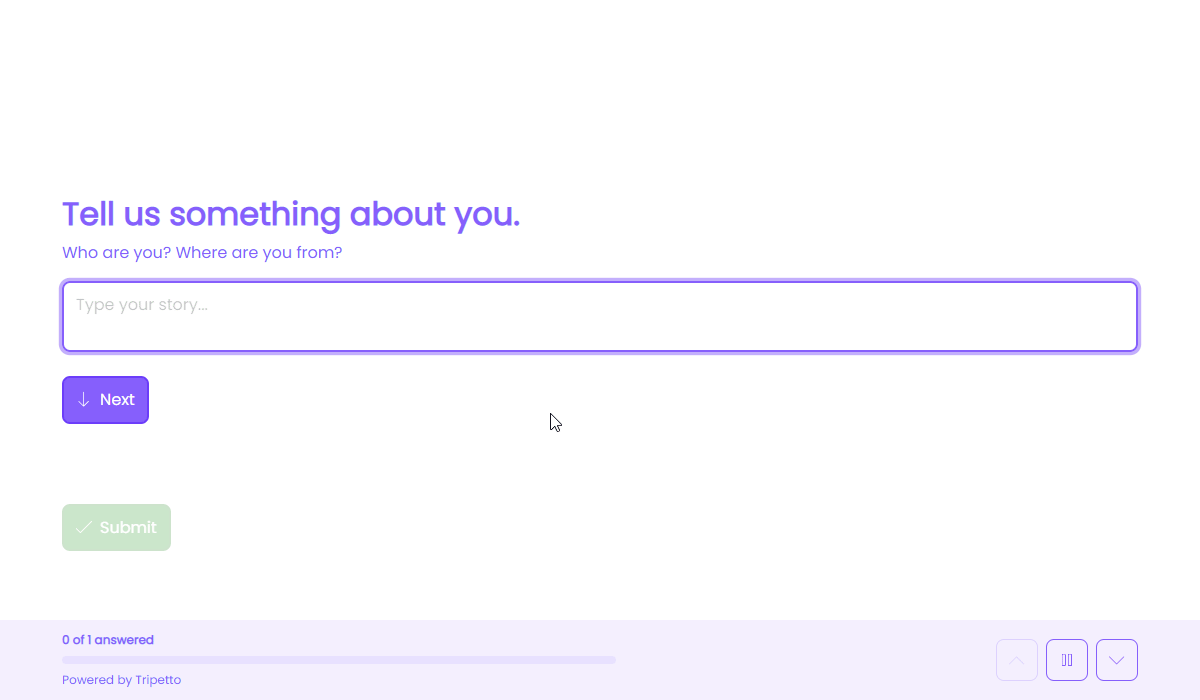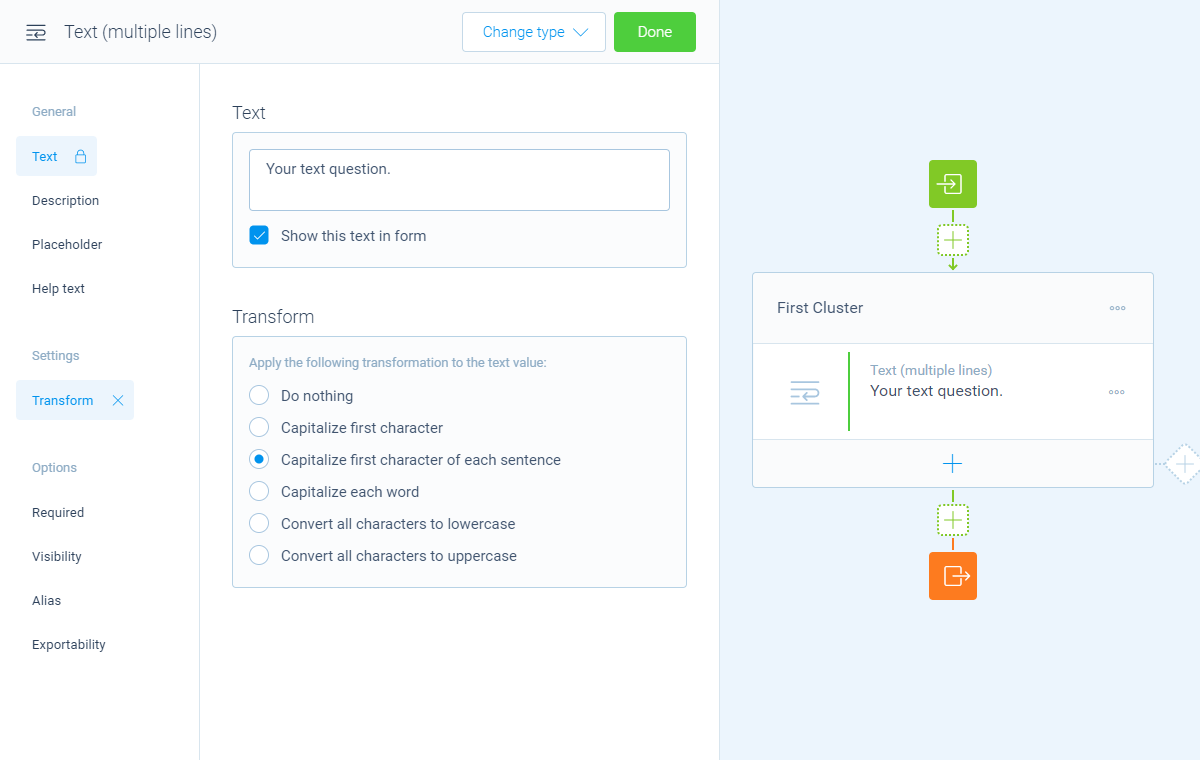How to use the text (multiple lines) block
Learn everything you need to know to use the text (multiple lines) block in your forms.
When to use
Use the text (multiple lines) block to let your respondents enter a text answer that can contain line breaks. Usually used for long text answers, like explanations.

How to use
Add a new block to your form and then select the question type Text (multiple lines). You can now customize this block to your needs with the following features:
General
- Text
Use theTextfeature for the name/title of this block. - Description
Enable theDescriptionfeature to add a description to this block. - Placeholder
Enable thePlaceholderfeature to add a text inside the empty input control of this block. - Help text
Enable theHelp textfeature to add a help text to this block.
Settings
- Limits
Enable theLimitsfeature to control the amount of characters your respondents can enter. You can set theMinimumandMaximumcharacter limits. - Transform
Enable theTransformfeature to determine how the answered text should be transformed. For example you can capitalize certain parts of the answer, or convert all characters to lowercase/uppercase.
Options
- Prefill
Enable thePrefillfeature to set a fixed initial value of this block. - Required
By default this block is not required to fill out by your respondents. Enable theRequiredfeature to make this block required to fill out. - Visibility
By default this block is visible in your form. Enable theVisibilityfeature to hide it for your respondents. - Alias
By default the name/title of this block will be used in your dataset. Enable theAliasfeature to use a different name in your dataset. - Exportability
By default the collected data of this block will be stored to the dataset of each result. Enable theExportabilityfeature to take control over the storage. You can then include/exclude the data from your dataset. Please note that if you exclude data from the dataset you can never see and/or use the given answers from your respondents to this block, because the data is simply not stored at all.

Logic
Logic is important to make your forms smart and conversational. The text (multiple lines) block can work with the following branch conditions to help you with that:
Block conditions
- Text matches
your filter; - Text does not match
your filter; - Text contains
your filter; - Text does not contain
your filter; - Text starts with
your filter; - Text ends with
your filter; - Text is empty;
- Text is not empty.
Filters
When we mention your filter above, there are some different filters that you can use to make the right comparison:
- Text - Compare with a fixed text that you enter;
- Value - Compare with another block value entered in the form by a respondent (more info).
Calculations
You can use the calculator block to perform calculations with given answers. The text (multiple lines) block supports the following calculation operations:
- Compare - Compare a text and output a value based on the result of the comparison;
- Character count - Count the number of characters in a text;
- Word count - Count the number of words in a text;
- Line count - Count the number of lines in a text;
- Count occurrences - Count the number of occurrences of a certain text, character or regular expression in a text;
- Convert to number - Convert a text to a number value.
